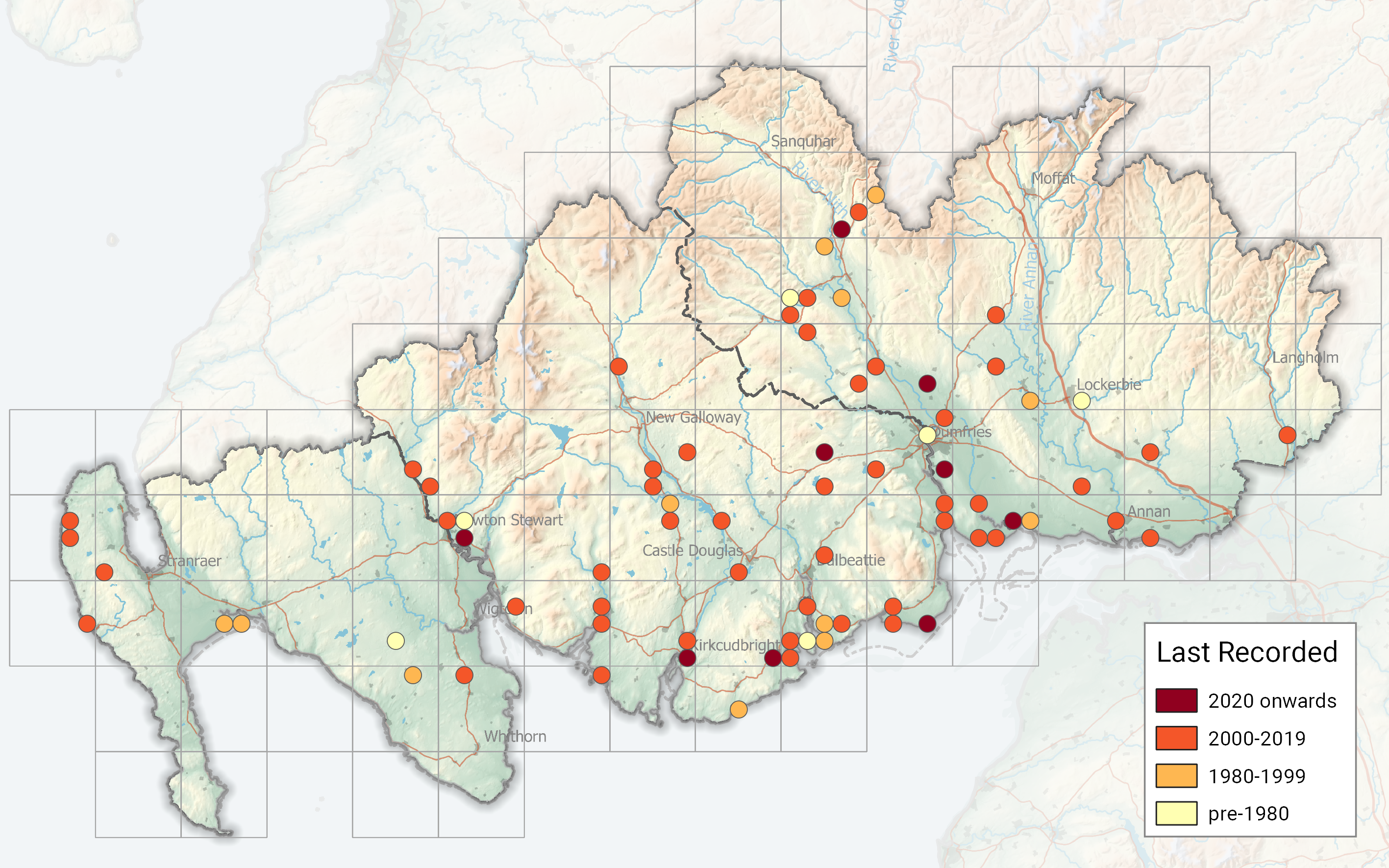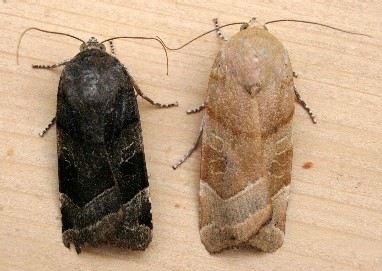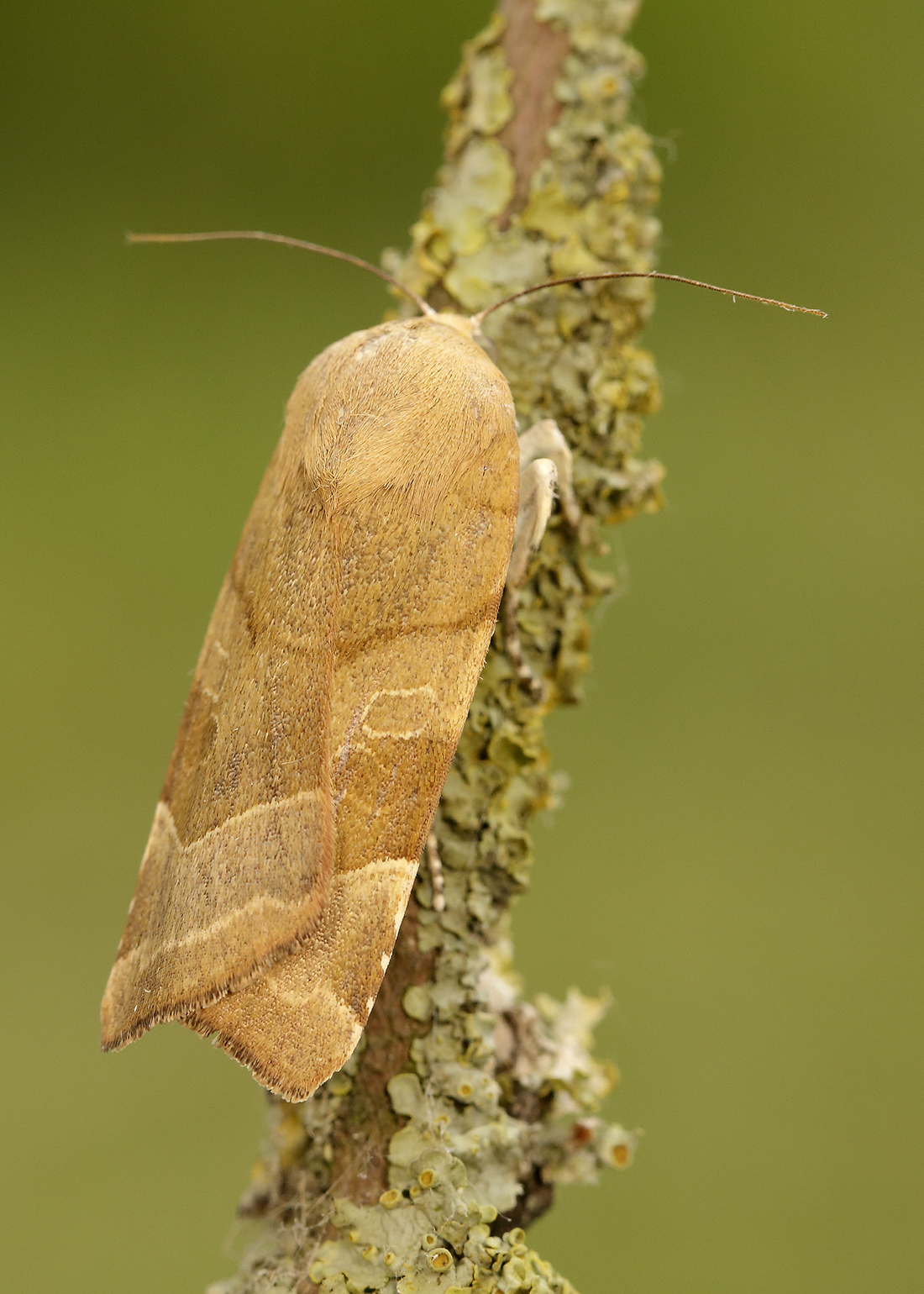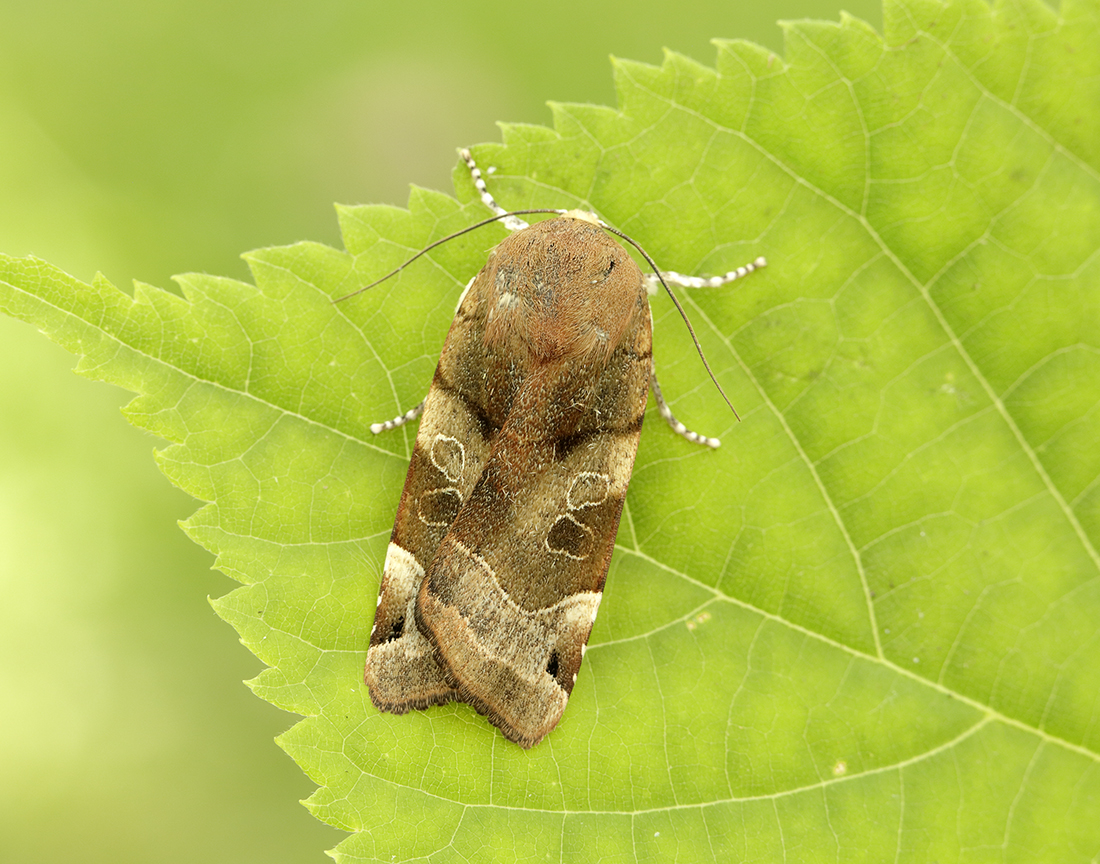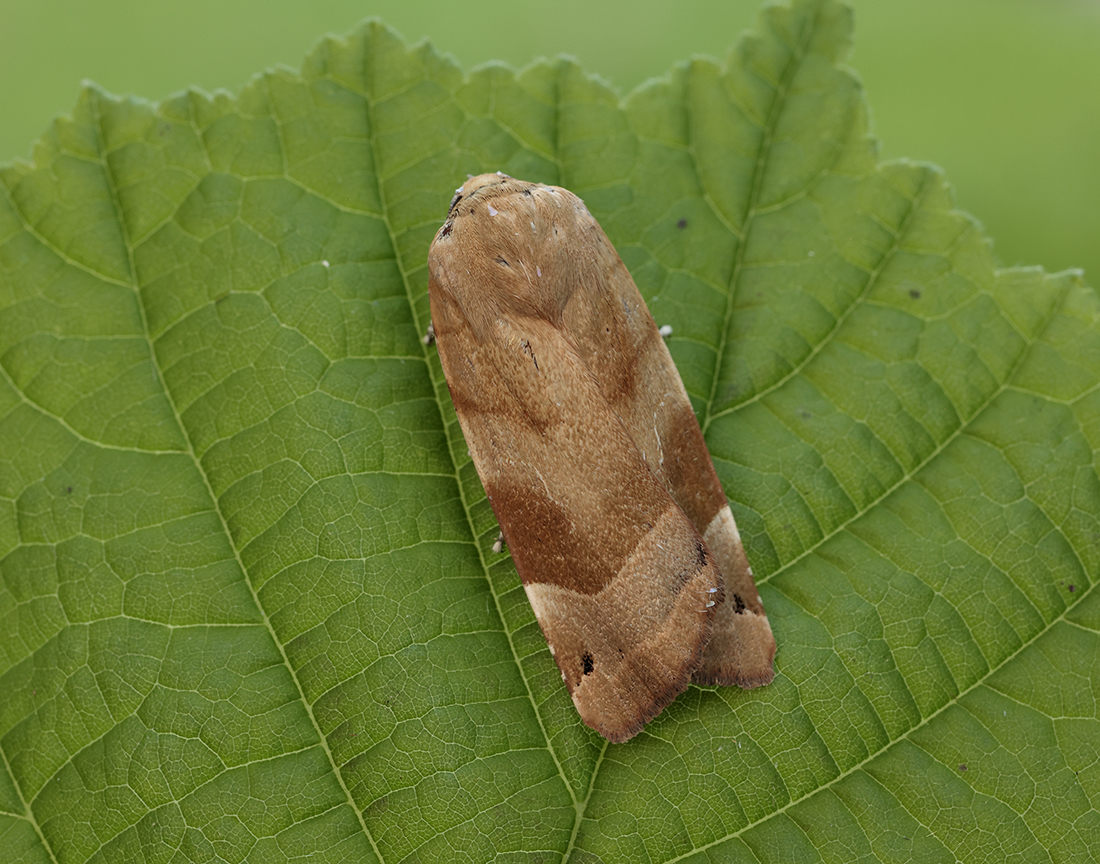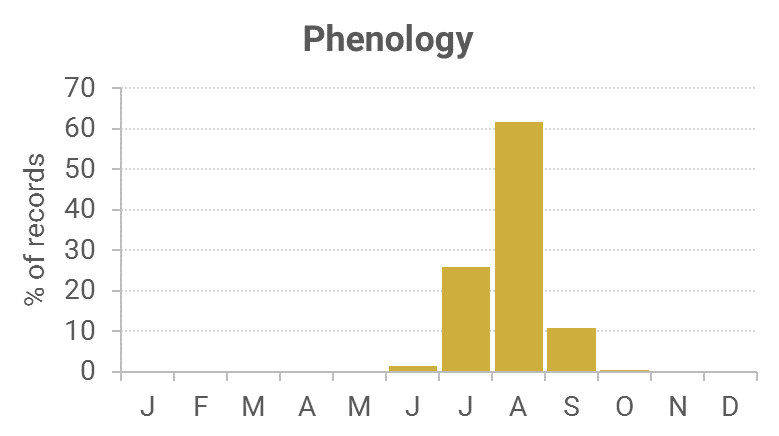Identification
Unmistakable. Colour is variable but markings are constant.
Recording Method.
Attracted to light, also comes to sugar.
Life cycle
One generation. Overwinters as a small larva close to the ground, during September to May. Pupation takes place underground.
Larval foodplants
Larvae feed on a wide range of herbaceous plants, including Common Nettle, Broad-leaved Dock and Primrose.
Habitat
Broadleaved woodland, parkland and other well-wooded areas.
History
Lennon (1863 stated it was common everywhere around the Dumfries area. Douglas Robinson (1870-71) found one at sugar in August on Almorness (VC73). Gordon (1913) found it frequent at sugar in the woods in July around Corsemalzie, Wigtownshire. Earliest date was 10th July 1896. Additional to MOGBI for VC74. Sir Arthur Duncan (1909-84) during his lifetime had found it at Tynron during 1951 (VC72).
There were a handful of records in the early 1970s, followed by just two Rothamsted captures, both at Waterside Mains at Keir, in 1977 and 1982. Regular trapping at Hensol in the early 1980s found it to be present.
With the advent of the portable trap it has been found to be widespread and was trapped regularly at Kirkton (VC72) and Cally Woods (VC73). It is probably under-recorded in Wigtownshire as there are few records.

